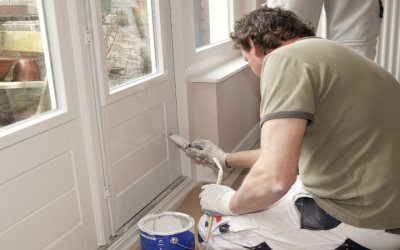The colors you choose for your home’s interior can have a profound effect on the atmosphere of each room. Whether you’re looking to create a relaxing retreat, add vibrancy to a space, or make your home feel larger and more open, the right color can set the tone for the entire room. Choosing the best colors for your home isn’t just about what’s trending; it’s about what suits your space and your personal style.
As experts in interior house painting, we’ve seen firsthand how impactful color choices can be. In this blog, we’ll share valuable insights into selecting the perfect colors for your home’s interior, from understanding color psychology to exploring design techniques that maximize the beauty of your space.
Understanding Color Psychology
When selecting colors for your home, it’s important to consider color psychology—the study of how colors can influence mood and behavior. Each color evokes certain emotions and can make a room feel different. Here are a few common examples:
• Blue: Known for its calming effects, blue is often used in bedrooms and bathrooms to promote relaxation. It’s ideal for creating a peaceful, tranquil atmosphere.
• Yellow: A warm, cheerful color, yellow can make a room feel bright and inviting. It’s often used in kitchens and living areas to stimulate energy and happiness.
• Green: Representing nature and renewal, green is great for living rooms or offices. It brings balance and harmony to any space.
• Red: A bold, energetic color, red is best used sparingly, such as on accent walls. It can add warmth and excitement, making it perfect for dining rooms or areas meant for socializing.
• Neutral Colors (Gray, White, Beige): These versatile colors provide a timeless backdrop, offering a sophisticated and serene environment. They can be used in almost any room, paired with bolder accent colors.
Before committing to a color, consider how it will influence the mood of the room. Whether you want a cozy, calming space or a bright, invigorating one, color psychology can help guide your decisions.
Considering Room Size and Lighting
When choosing the right colors for your interior, it’s essential to consider the size and natural lighting of the space. Lighter colors, like soft whites, light grays, and pastels, tend to make small rooms appear larger and more open. They reflect light, which can help brighten up darker spaces or rooms with limited natural light.
On the other hand, darker colors, such as deep blues or charcoal grays, create a sense of coziness and can add a sophisticated, intimate feel to larger rooms. However, when using darker shades, be mindful of the room’s lighting; these colors may make the room feel smaller or more enclosed if there’s not enough natural or artificial light.
If you have a room with large windows and plenty of sunlight, you may have more flexibility in choosing darker hues, as the natural light will help balance the deep tones.
Creating Flow Between Rooms
If your home has an open floor plan, you’ll want to choose colors that create a cohesive flow between rooms. While you don’t need to use the same color throughout, using complementary tones and shades will ensure the rooms feel connected.
For instance, if your living room is painted in a soft gray, you might choose a darker shade of gray or a muted blue for the dining area. By maintaining a consistent color palette, you can create a harmonious transition from one space to another. Consider using accent walls or statement pieces in contrasting colors to add interest and depth.
It’s also important to think about the furniture and decor in the space. Choose colors that complement your existing pieces, and be mindful of how the colors of walls, floors, and furniture will interact. For example, warm colors like beige or taupe can complement wood furniture, while cool tones like blue and gray pair well with metal and glass furniture.
Accent Walls: A Bold Design Choice
Accent walls are a popular way to introduce color into a space without overwhelming it. By painting just one wall in a bold hue, you can create a focal point in the room. Accent walls work particularly well in living rooms, bedrooms, and dining rooms.
When choosing an accent color, consider using tones that are complementary to the room’s base color. For instance, if your living room is painted a soft gray, a navy blue accent wall can create a striking contrast that adds interest without clashing.
Make sure the accent wall doesn’t overpower the room. It should complement the space and enhance its overall design, not dominate it.
How to Test Colors Before Committing
Before finalizing your color choices, it’s important to test them in the room. Paint samples on the wall in small patches and observe how they look at different times of the day. Lighting changes throughout the day can significantly alter the appearance of a color, so what you see in the store may not always be how it will look in your home.
For larger spaces, you may want to test several shades to see how they interact with the room’s natural light. If you’re unsure about a color, it’s also a good idea to get input from a professional home painting services provider who can offer recommendations based on their experience.
Final Thoughts
Choosing the right colors for your home’s interior can transform your space and create an environment that reflects your personality and style. By considering color psychology, room size, lighting, and the flow of your home, you can create a harmonious and inviting atmosphere that enhances the beauty of each room.
If you’re unsure where to start or need professional advice, consulting a trusted partner in the industry can provide expert guidance tailored to your home’s needs. A professional can help you navigate the nuances of interior house painting and ensure your space looks its best.
Ready to refresh your home with a new color palette? Explore our home painting services for more information on how we can help you achieve the perfect look for your interior spaces.



